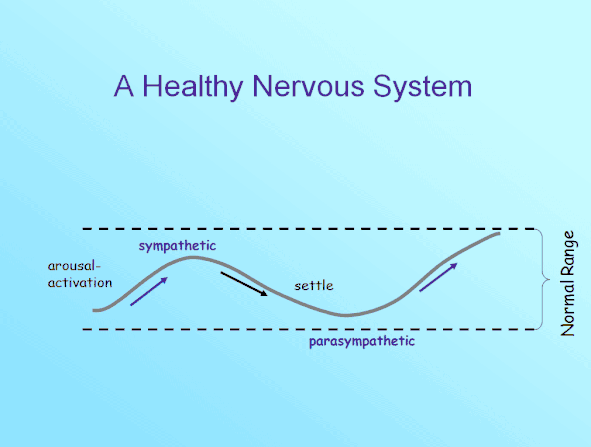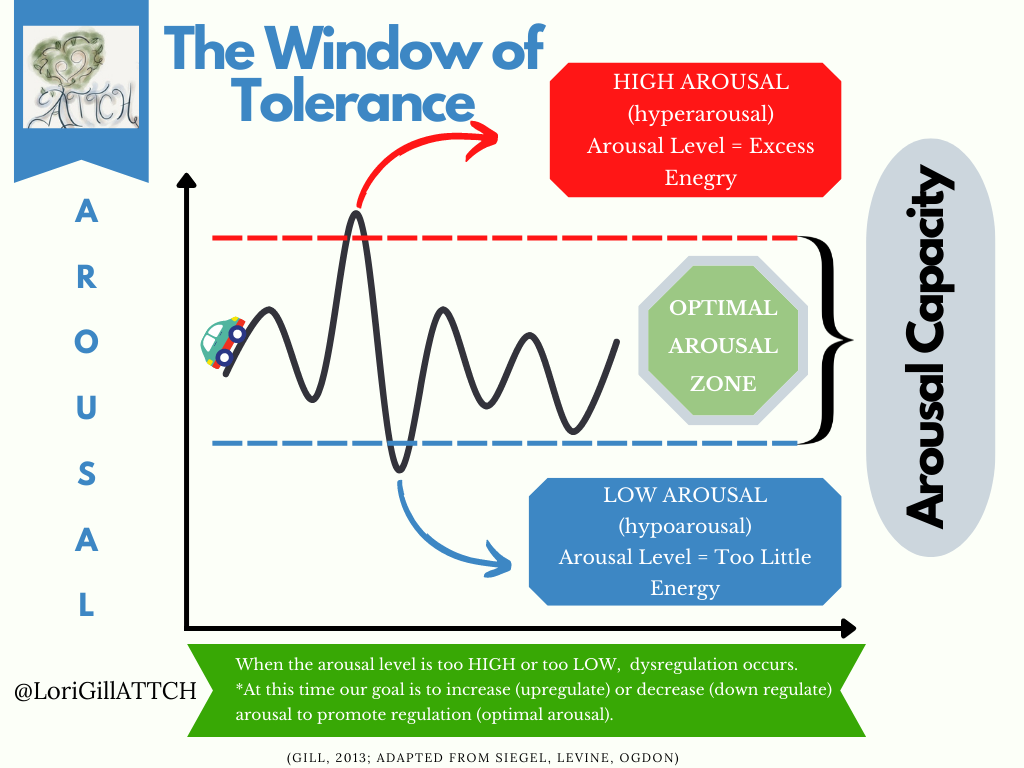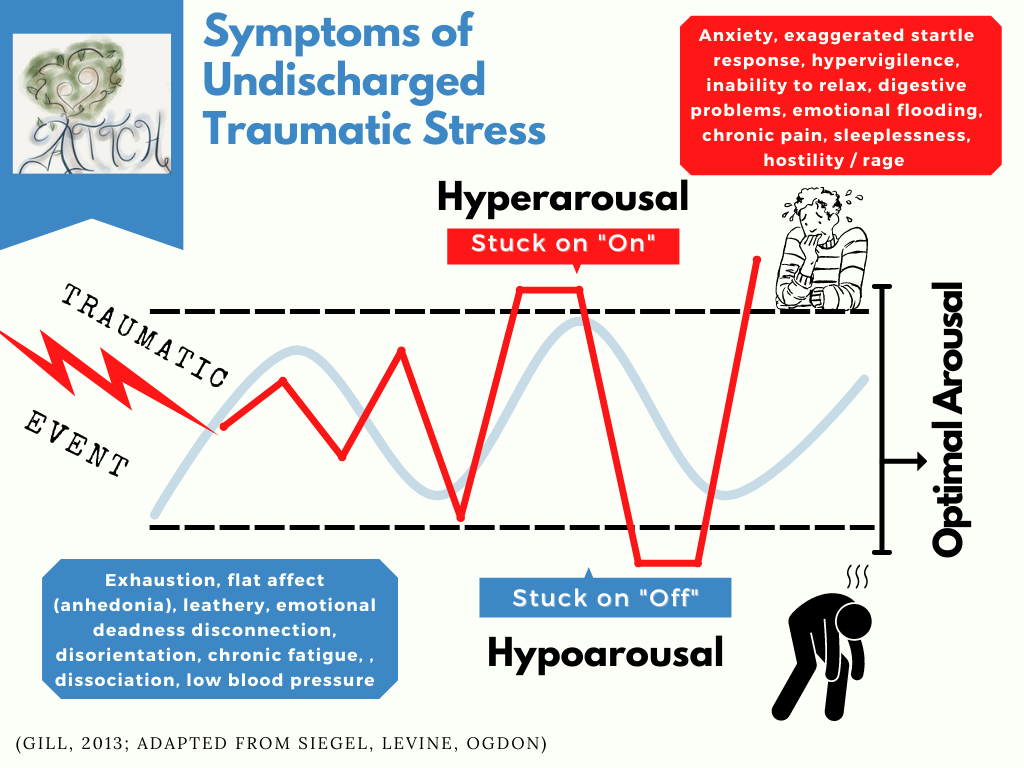As babies when we have healthy attachment with attuned, available, nurturing caregivers we lay the foundations for the optimal development of our brain and nervous system. This co-regulation offered by our caregivers helps us to effectively self-regulate independently as we grow older.
“Window of Tolerance” is a term coined by Dr. Dan Siegel, which denotes normal brain/body reactions, especially following adversity. The idea suggests that we have an optimal arousal level when we are within the window of tolerance that allows for the ups and downs of emotions, e.g. hurt, anxiety, pain, anger that may bring us close to the edges of the window of tolerance but generally we can use strategies to keep within this window. Similarly we may feel exhausted, sad, or shut down but we generally can find a way to shift out of this. The below diagram demonstrates what happens when we move out of the window of tolerance into high or low arousal, experiencing activation followed by a settling.
When we experience challenges through trauma and unmet attachment needs this can drastically disrupt our nervous system’s capacity to self-regulate. Our senses become heightened and experiences and reactions are intensified and strategies are less accessible than usual. Challenging adverse experiences can also shrink our window of tolerance, e.g. we have less capacity to ebb and flow and a greater tendency to become overwhelmed. Learning how to track and shift our emotions can be a powerful tool to support and encourage regulation and integration throughout the body, mind and brains. Otherwise we can get stuck on “On” or “Off” as depicted in the below diagram:
Regarding hyperarousal, calm arousal, and hypoarousal.
- Calm arousal is optimal, and we often fluctuate within various levels of calm arousal throughout the day. However, when we become too over-stimulated by fear, pain, anger, trauma triggers, etc. we can find ourselves outside of our window of tolerance in hyperarousal.
- Hyperarousal has excessive activation/energy often in the form of anxiety, panic, fear, hypervigilence, emotional flooding etc. This keeps our system stuck on “On” and impacts our ability to relax, often making it difficult to sleep, eat and digest food, as well as manage our emotions. If intense, it can also result in dissociative rage/hostility.
- Hypoarousal can occur when we have too much hyperarousal, surpassing the pain/emotional overwhelm our brain/body is able to tolerate, which causes us to move into a state of hypoarousal (shutting down or dissociating). In this state our system becomes stuck on “Off” and shows up as exhaustion, depression, flat emotion, numbness, disconnection, dissociation, etc. This also impacts our bodies’ basic functions, e.g. we may want to sleep all the time, affects our appetite and digestion, and may make us feel emotionally deadened.
However, humans have capacity to stay in one state for so long before the brain and body shifts us. For example, we can only tolerate so much pain, anxiety, fear, before the brain and body numb us to this excessive energy. Similarly people will only stay in a shut down state feeling emotionally deadened before the brain/body shifts us out of this often by gravitating towards things that make us feel alive, e.g. high risk behaviors to bring about a sense of excitement, activation, and vitality.
Without having experienced regulation in infancy and childhood or following unresolved traumatic experiences that remain activated in the brain and body, many people may grow up in a manner that they don’t know how to self-regulate. Instead, they often attempt to self-regulate and bring themselves into a calm arousal level any way they can. For example someone with excessive fear may gravitate towards a depressant to calm their brain and nervous system, whereas someone feeling emotionally deadened may gravitate towards a stimulant to make them feel alive.
Parents and loved ones can help by identifying and labeling (making observations based on how each other are presenting) “It looks like you are feeling overwhelmed, why don’t we take a break” etc. Dan Siegel refers to this as “name it to tame it”. Naming it allows for a sense of understanding and being seen as well as validation. When we stop to notice (within ourselves or others) this can be a powerful grounding tool. Children, youth, and adults should be encouraged to focus mindfully on noticing how they feel, how their body feels, and identifying what they need to feel right again. Our goal is to essentially broaden this window of tolerance increasing capacity for people to hold emotional experiences, even those of higher intensity, without become dysregulated or going into hyper or hypo arousal.
I hope that this is helpful to better understanding and helping your own as well as your loved ones nervous systems!






